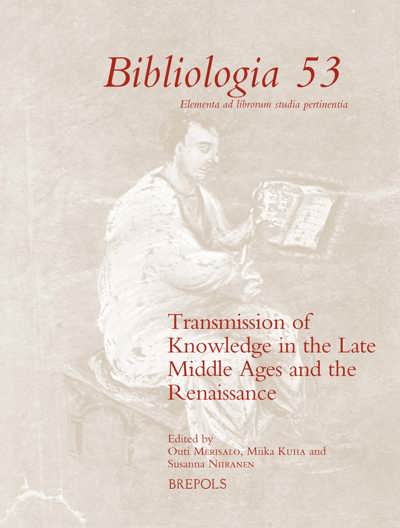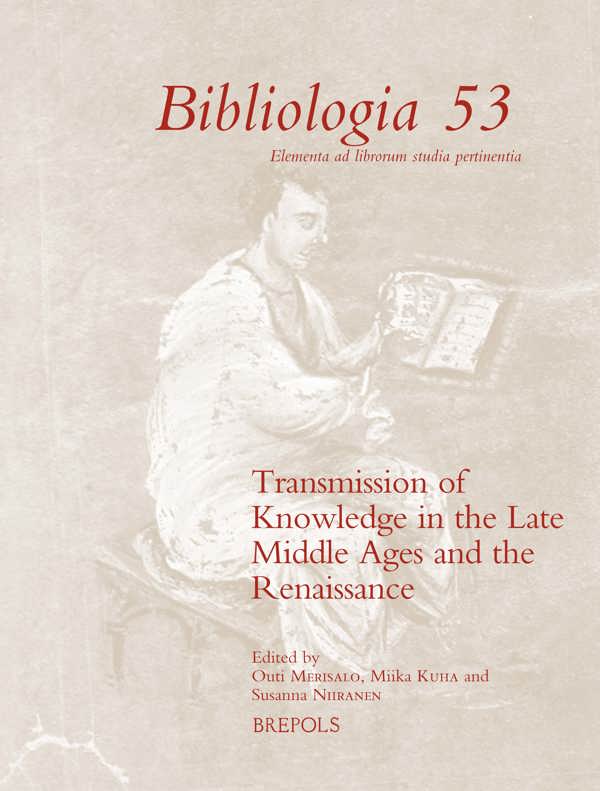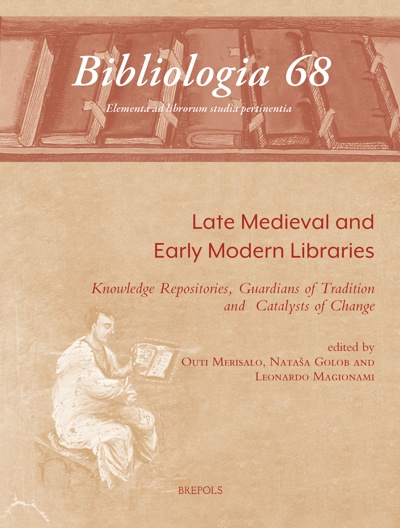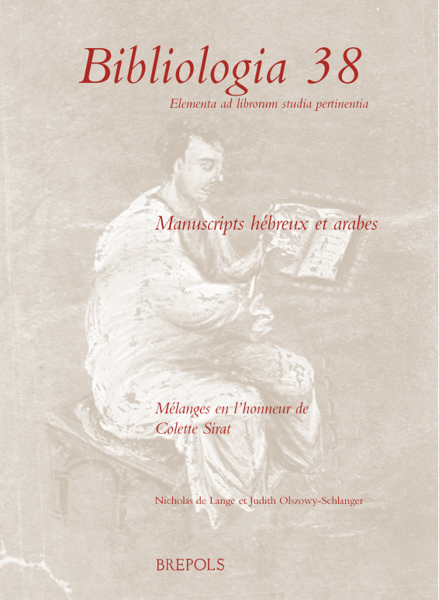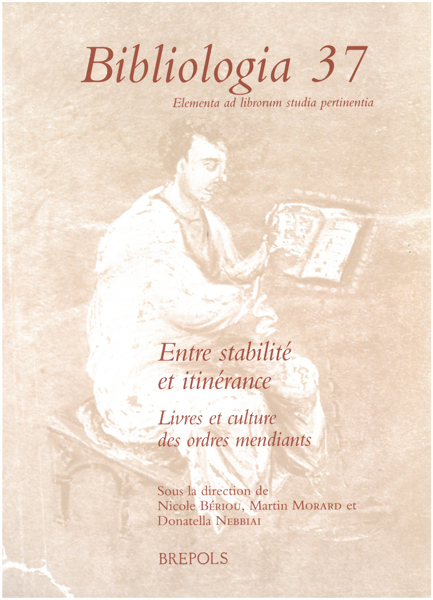
Transmission of Knowledge in the Late Middle Ages and the Renaissance
Outi Merisalo, Susanna Niiranen, Miika Kuha (eds)
- Pages: 239 p.
- Size:216 x 280 mm
- Illustrations:19 col.
- Language(s):English, French, Italian
- Publication Year:2019
- € 90,00 EXCL. VAT RETAIL PRICE
- ISBN: 978-2-503-58156-9
- Paperback
- Available
- € 90,00 EXCL. VAT RETAIL PRICE
- ISBN: 978-2-503-58453-9
- E-book
- Available
- Contains contributions in Open Access
What were people really reading at the end of the Middle Ages and in the Renaissance?
Prof. Outi Merisalo (University of Jyväskylä) has published extensively on the history of the Latin script in the Middle Ages and the Renaissance and medical manuscripts, among others. She is currently PI of an international book historical project on Late Medieval and Early Modern Libraries as Knowledge Repositories, Guardians of Tradition and Catalysts of Change (Lamemoli, 2017-2021, Academy of Finland & University of Jyväskylä). For a full list of publications, see https://staff.jyu.fi/Members/merisalo/publications.htm.
Dr. Susanna Niiranen, Senior Researcher at the Department of History and Ethnology, University of Jyväskylä, Finland, has published extensively on various aspects of medieval and early modern literature, medicine, gender, vernacularisation and transmission of knowledge. In the Lamemoli project she is reconstructing the book collections of Catherine Jagiellon and her son Sigismund I Vasa, King of Sweden and Poland. For a full list of publications, see http://www.jyu.fi/hytk/fi/laitokset/hela/en/staff/niiranenpublications.
Dr. Miika Kuha (University of Jyväskylä) completed his PhD dissertation on Late Medieval Venetian historiography in 2017. He is currently preparing a critical edition of the Latin chronicle of Venice by Benintendi de’ Ravagnani (1381–1365). In the Lamemoli project he is conducting research on the library of doge Leonardo Donà (1532–1613).
The nineteenth century saw the rapid development of textual criticism for establishing the “best” and “most authentic” forms of both Ancient and Mediaeval texts thanks to the method perfected by Karl Lachmann, who based himself on the insights gained during the eighteenth century. Lachmann’s method has been further refined by later philologists, with, most interestingly, the use of computers in establishing the mutual relations of manuscript witnesses since the last decades of the twentieth century. However, the interest in what form the texts, both Ancient and Mediaeval, were actually circulating in the Late Middle Ages and in the Renaissance, has been slow to emerge as an area of scholarly interest. In other words: what did the readers actually get in front of their eyes, and acted upon as, say, doctors, historians, theologians between the thirteenth and sixteenth centuries?
This volume explores the Late Medieval and Renaissance transmission of texts of different genres, languages and periods from the book historical point of view, taking into consideration not only the textual but also the material aspect of the traditions.
The authors include eminent specialists as well as mid- and early career scholars.
Outi Merisalo, Introduction
I. Roman law
Mario Varvaro, Note sulla definizione della possessio nel Festo Farnesiano (Napoli, BNN, IV. A. 3)
II. Medicine
Stefania Fortuna, La tradizione latina di Galeno e il De farmaciis
Monica H. Green, Recovering ‘Ancient’ Gynaecology. The Humanist Rediscovery of the Eleventh-Century Gynaecological Corpus
Iolanda Ventura, Una trasmissione complessa da rivedere. Appunti sul corpus di scritti di Giovanni di Saint-Amand
Vivian Nutton, The Transmission of Medical Knowledge in Script and Print
III. Religious literature
Elena Parina, Maria Volkonskaya, Middle Welsh texts on the Virtues of the Mass in their European context
IV. Historiography
Samu Niskanen, Copyists and redactors. Towards a prolegomenon to the editio princeps of Peregrinatio Antiochie per Vrbanum papam facta
Jakub Kujawiński, Saved in Translation. Vernacular translations from Paris, BNF, fr. 688, as witnesses of lost texts, manuscripts and readings
Concetta Bianca, Revisione d’autore o intervento ideologico? A proposito del De expeditione in Turcos di Biondo Flavio
Miika Kuha, The Reception of Humanist Historiography in Venice. Simultaneous Copying of the De gestis, moribus et nobilitate civitatis Venetiarum by Lorenzo de' Monaci at the Beginning of the Sixteenth Century
Susanna Niiranen, From Prison to Print. Johannes Messenius' Scondia illustrata as a co-product of early modern prison writing
V. Military literature
Joëlle Ducos, De la glose à la parenthèse. Traduire Végèce en français au XVIe siècle
VI. Poetry
Lorenzo Amato, Le serie di madrigali alla Strozzi. Una prima ricognizione e analisi socio-culturale di un genere poetico granducale
Paul Gwynne, Problems Mainly Propertian. Francesco Sperulo and Renaissance Commentary
Abbreviations of Library Names
Index codicum
Index rerum
Index nominum
Illustrations
